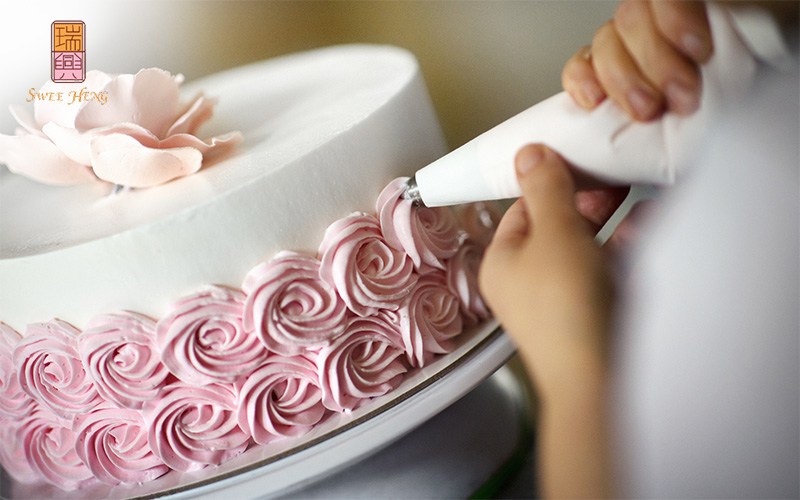 0
0

The Science Behind Perfectly Moist Cakes
From taste to texture, several factors define a high-quality cake, but its moistness is undeniably one of the most crucial elements. Biting into a perfectly moist cake enriches the dessert experience, tantalising the taste buds and satisfying sweet tooth cravings. However, achieving this is both an art and a science that may be tricky for beginner bakers to get right. Fret not, in this article, we’ll explore and share some key techniques to guarantee your baked creations reach perfection every single time.
Learn more: The Recipe for the Perfect Chocolate Cake: Tips and Tricks
Proper Mixing

While ensuring thorough mixing of wet and dry ingredients is essential for creating a smoother batter, it’s equally important to avoid overmixing, which can develop too much gluten and result in a dense and tough cake. To prevent this, watch for cues in the batter’s texture — it should be smooth and well-combined, but once the dry ingredients are incorporated, it’s time to stop. Overmixing is often indicated by a thick, elastic consistency rather than a light, pourable batter. The ingredients should also ideally be at room temperature, promoting better emulsification and allowing fats to blend seamlessly with liquids and sugars, ultimately helping the cake retain moisture.
Select the Right Ingredients
You may think cake ingredients are fixed, but they can actually be quite flexible, with various substitutes to enhance moisture and texture. When focusing on ingredients for moist cakes, choose those with naturally high moisture content, such as buttermilk, sour cream, or yoghurt, which contribute to both tenderness and moisture retention. These dairy products help keep the cake soft and light while adding subtle richness. Additionally, using oil instead of butter is a common substitution for a more moist texture, as oil remains liquid at room temperature, making sure the dessert stays moist longer. Selecting the right ingredients allows you to customise your cake’s moisture level while still maintaining flavour and texture.
Baking Time and Temperature

Cake baking methods that focus on accuracy are key to preventing your sweet treat from drying out. Baking at the right temperature enables your cake to rise properly and retain moisture without becoming overbaked. If the oven is too hot, the cake can brown too quickly on the outside while remaining undercooked inside, leading to uneven texture. On the other hand, overbaking can result in a dry and crumbly confection. To avoid this, use a toothpick or cake tester to check for doneness — once it comes out with just a few moist crumbs, you have yourself a delectable, moist cake, ready to be enjoyed!
Simple Syrup Soaking
Many may not be aware of this cake moisture secret, but the use of syrup soaking can achieve perfectly moist cakes. Simply brush the cake layers with syrup made from equal parts sugar and water after baking. The solution not only adds moisture but also improves the flavour of the desert, making it ideal for layered or sponge cakes that are more prone to drying out. This technique is especially useful when preparing baked goods ahead of time, maintaining their softness and freshness. By locking in moisture, syrups can transform even a slightly dry cake into one that is irresistibly tender and flavourful.
We hope these baking science tips provide a helpful starting point on your journey to creating deliciously moist cakes. But, if baking isn’t your forte, why not skip the hassle and indulge in scrumptious, high-quality bakes from our cake shop?
For added convenience, take advantage of our online cake delivery in Singapore and have your sweet treat delivered right to your doorstep — no need for baking or travelling!






 17 December 2024
17 December 2024 


